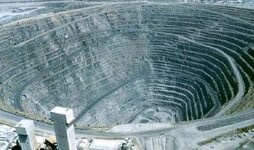Dave Rishar
Silver Member
Were Vikings even in the area? In the area, yes. On Oak Island, maybe. It's plausible. I personally believe that they made it a lot further south than what most historians outside of Iceland give them credit for. Hard evidence is lacking, but the theory makes sense.
They would not have been bringing treasure with them, though; they didn't make that trip to haul treasure there, although they were certainly happy enough to haul treasure back with them. (In this case, "treasure" refers to lumber and furs, but I doubt that they would have passed up some gold if it crossed their path.) They also wouldn't have buried a ship vertically. We may not precisely know all the places that they made it to, but we do know how they typically acted both at home and abroad. This doesn't fit.
Also, timeline. McGinnis noticed something in the latter part of the 18th century, maybe early 19th century. (1795 is anything but proved, but it's probably close.) Vikings were neither burying nor recovering treasure then, and there is that pesky matter of the block and tackle, the cleared area, and the depression. We can take or leave any of those "facts" as we like, the story being as bad as it is, but McGinnis apparently saw something that convinced him to dig. It couldn't have been all that old when he saw it, or he wouldn't have seen it. In fact, if we discard the "torches at night" part of the story in order to not have to explain people on the island the night before he went there, we find that he had no reason to look in the first place.
As I said before, it's a fundamentally flawed story. Any theories crafted to support it will be fundamentally flawed by design.
They would not have been bringing treasure with them, though; they didn't make that trip to haul treasure there, although they were certainly happy enough to haul treasure back with them. (In this case, "treasure" refers to lumber and furs, but I doubt that they would have passed up some gold if it crossed their path.) They also wouldn't have buried a ship vertically. We may not precisely know all the places that they made it to, but we do know how they typically acted both at home and abroad. This doesn't fit.
Also, timeline. McGinnis noticed something in the latter part of the 18th century, maybe early 19th century. (1795 is anything but proved, but it's probably close.) Vikings were neither burying nor recovering treasure then, and there is that pesky matter of the block and tackle, the cleared area, and the depression. We can take or leave any of those "facts" as we like, the story being as bad as it is, but McGinnis apparently saw something that convinced him to dig. It couldn't have been all that old when he saw it, or he wouldn't have seen it. In fact, if we discard the "torches at night" part of the story in order to not have to explain people on the island the night before he went there, we find that he had no reason to look in the first place.
As I said before, it's a fundamentally flawed story. Any theories crafted to support it will be fundamentally flawed by design.








